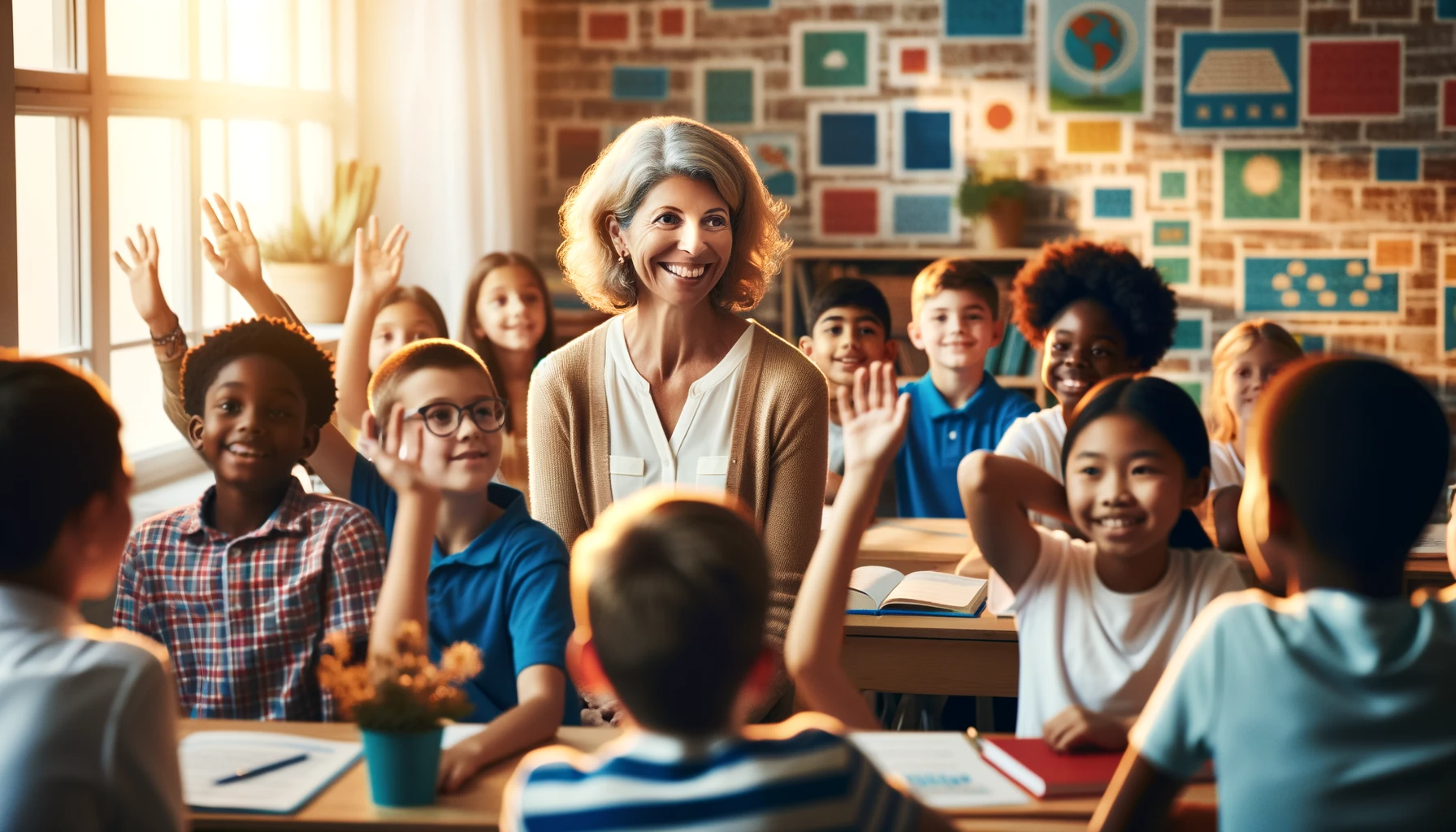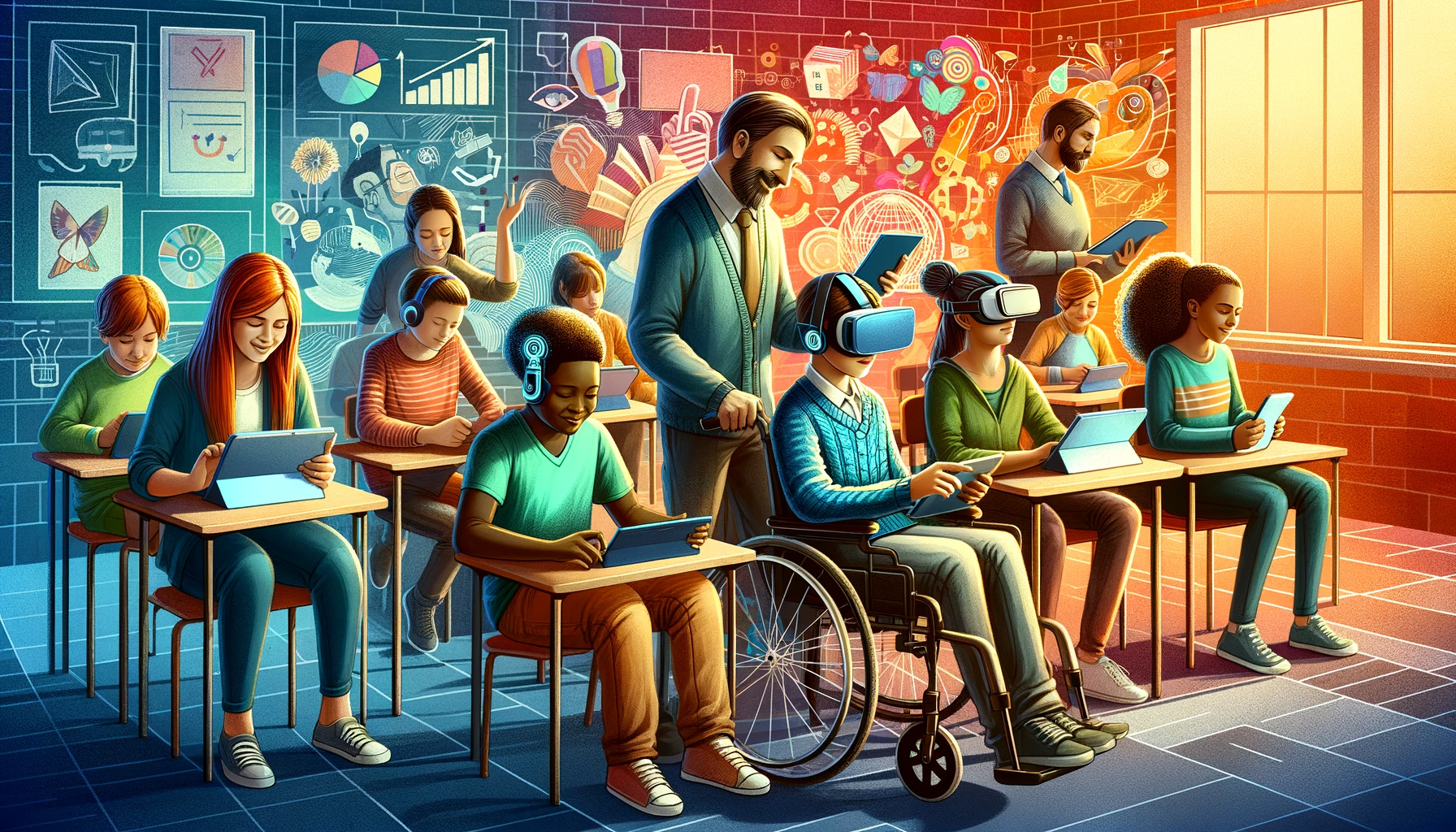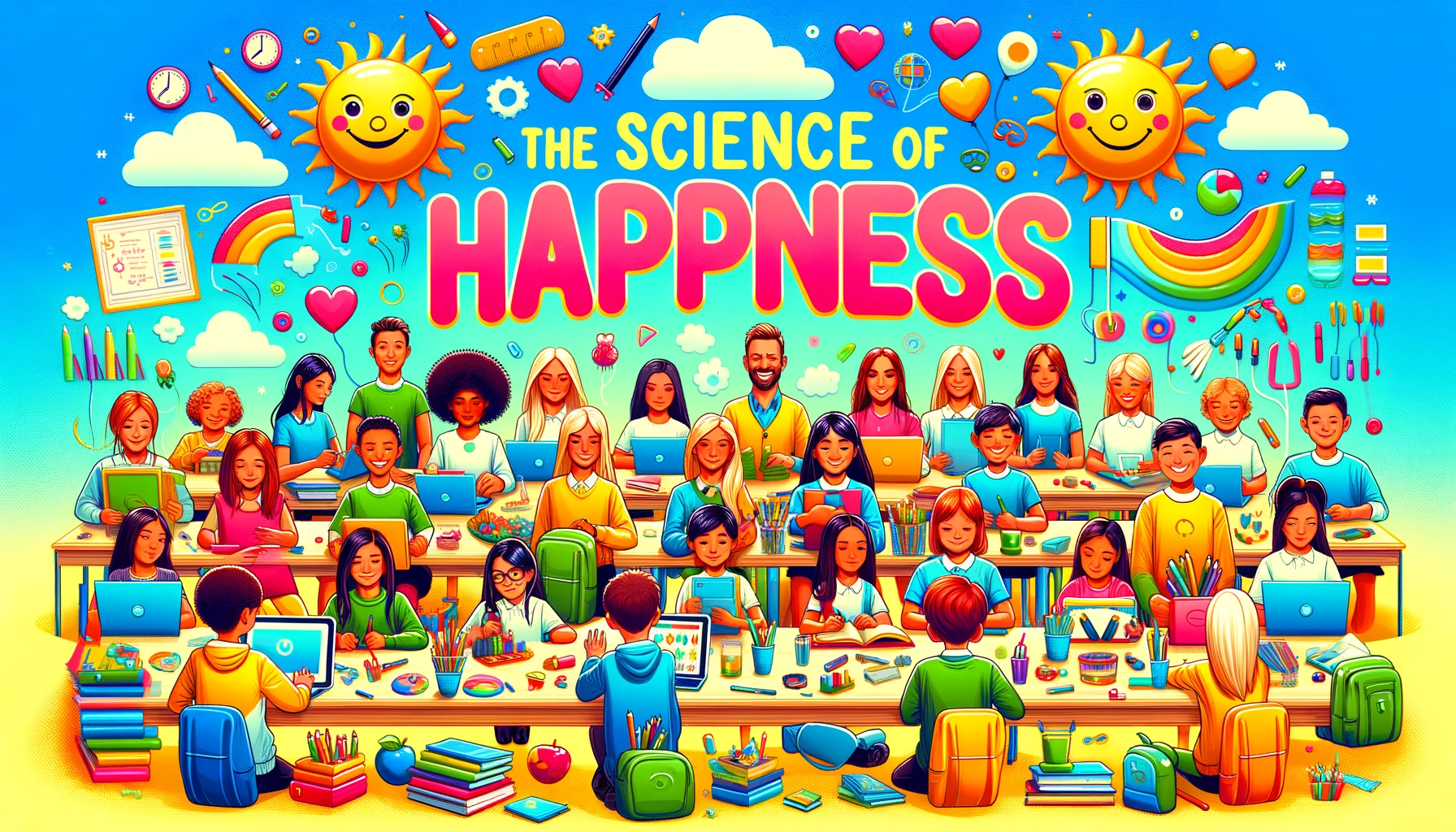
In the realm of education, the bedrock for fostering a thriving learning environment lies in the cultivation of positive teacher-student relationships. These relationships are not mere interactions but dynamic bonds that significantly impact the academic journey of students. Effective teaching methods are elevated when grounded in a foundation of strong teacher-student communication.
Positive teacher-student relationships encompass more than just conveying information. They involve creating a supportive learning atmosphere where educational partnerships thrive. Classroom rapport is not solely about delivering lessons; it extends to strategies for building student trust and fostering connections that enhance the overall learning experience.
To optimize these relationships, educators must delve into effective teaching methods and student engagement strategies. By incorporating educational bonding techniques, such as promoting teacher empathy practices and utilizing student motivation strategies, a supportive classroom environment becomes the breeding ground for academic success.
Educational partnership dynamics go beyond the conventional roles of teacher and student. They encompass teacher-student collaboration, emphasizing the teacher’s influence on student success and well-being. The development of emotional intelligence in education becomes a pivotal aspect, contributing to a positive learning environment.
Developing Strong Teacher-Student Bonds
In the intricate tapestry of education, the cornerstone is undeniably teacher-student relationships. Building robust connections requires a deliberate process, acknowledging the significance of teacher-student communication, positive learning environments, and the establishment of an educational partnership.
Individual Needs and Backgrounds
To forge authentic connections, teachers must grasp the individual needs and backgrounds of their students. Incorporating effective teaching methods involves recognizing diverse learning styles, thus fostering an environment conducive to student engagement and academic success.
Strategies for Trust and Mutual Respect
Trust and mutual respect are the bedrock of successful teacher-student relationships. Implementing strategies for building student trust is paramount. By honing teacher communication skills and employing educational bonding techniques, the classroom becomes a supportive learning atmosphere where teacher empathy practices thrive.
Improving Student-Teacher Communication
Building strong teacher-student bonds is foundational to creating a positive learning atmosphere. The importance of teacher-student relationships cannot be overstated, as they significantly impact student engagement, classroom rapport, and overall academic success.
Active Listening and Effective Verbal Communication
One key aspect of improving student-teacher communication is mastering active listening and employing effective verbal communication. Teachers who actively listen and communicate clearly foster positive teacher-student relationships, contributing to a supportive learning environment. Utilizing educational bonding techniques, such as reflective listening, can enhance the connection between educators and students.
Tools and Technologies for Modern Classroom Communication
In the contemporary educational landscape, leveraging tools and technologies is crucial. Integrating communication tools like virtual classrooms, messaging apps, and collaborative platforms enhances teacher-student collaboration. These tools not only facilitate effective teaching methods but also contribute to creating a supportive classroom environment, promoting a dynamic and interactive learning experience.
Nurturing Classroom Relationships for Student Engagement
Student Trust Development
Developing trust is a cornerstone of positive teacher-student interactions. Teachers can employ strategies for building student trust, such as consistent communication, transparency, and approachability. This trust forms the basis for a supportive learning atmosphere where students feel comfortable expressing themselves and actively participating in class discussions.
Teacher Empathy Practices
The role of empathy in education cannot be ignored. Teachers who demonstrate empathy create a positive learning environment that nurtures emotional intelligence in education. Incorporating teacher empathy practices into daily interactions enhances student well-being, contributing to a holistic educational experience.
Enhancing Academic Success Through Teacher-Student Relationships
Teacher Influence on Student Motivation
Teachers play a pivotal role in shaping student motivation. Implementing effective student engagement strategies and fostering positive teacher-student interactions directly impact student motivation. By acknowledging the teacher’s influence on students, educators can tailor their approach to enhance motivation and contribute to academic success.
Classroom Atmosphere Development
Creating a supportive classroom environment goes hand-in-hand with building positive teacher-student relationships. Strategies for building a supportive classroom environment include promoting open communication, recognizing individual student strengths, and implementing student mentorship programs. These initiatives contribute to a cohesive school community, benefiting both educators and students alike.
Effective Classroom Relationship Tips
In the realm of education, fostering strong teacher-student bonds is paramount. Successful teacher-student relationships contribute significantly to creating a positive learning environment. By incorporating effective classroom relationship tips, educators can enhance student engagement, establish a supportive learning atmosphere, and ultimately, promote academic success.
Practical Tips for Fostering Positive Teacher-Student Interactions
- Active Listening and Open Communication
Cultivate effective teacher communication skills by actively listening to students. Encourage open communication, creating a platform for students to express themselves comfortably. This simple yet powerful strategy builds rapport in education, forming the foundation for positive teacher-student relationships. - Addressing Challenges Constructively
Challenges and conflicts are inevitable, but addressing them constructively is key. Implement conflict resolution strategies that nurture classroom relationships rather than strain them. This approach contributes to a supportive learning atmosphere where challenges become opportunities for growth.
Creating a Supportive Learning Environment
Nurturing Classroom Relationships
- Building Rapport in Education
Invest time in building rapport in education by getting to know your students individually. Recognize and appreciate their strengths, interests, and concerns. This personalized approach fosters a positive learning environment and strengthens the teacher-student connection. - Student Trust Development
Trust is a crucial element of effective teacher-student relationships. Implement strategies for building student trust, such as consistency, transparency, and reliability. When students trust their teachers, they feel secure in their learning environment, contributing to enhanced academic success.
Strategies for Building Student Connection
Enhancing Learning Experience
- Student Engagement Strategies
Implement student engagement strategies that cater to diverse learning styles. Varied and interactive teaching methods contribute to positive teacher-student interactions. Utilize educational bonding techniques that resonate with students, making the learning experience more enjoyable and impactful. - Promoting Academic Success
The impact of teacher influence on students extends to academic success. By fostering positive teacher-student relationships, educators directly contribute to student motivation. Recognize the role teachers play in shaping student success and leverage this influence to enhance academic outcomes.
Educational Partnership Dynamics
Teacher Empathy Practices
- Teacher Empathy Practices
Acknowledge the role of empathy in education. Teachers who exhibit empathy create a positive learning environment that goes beyond academics. Implement teacher empathy practices, understanding the emotional needs of students, and contributing to their overall well-being. - Student Mentorship Programs
Explore the benefits of student mentorship programs in building a school community. These programs not only enhance the teacher-student connection but also contribute to a positive learning atmosphere by fostering peer support and collaboration.
Fostering Positive Teacher-Student Interactions
In the realm of education, teacher-student relationships stand as the cornerstone of a positive learning environment. Understanding the dynamics of positive teacher-student interactions unveils the crucial role of empathy in building and sustaining meaningful connections.
Exploring the Role of Empathy
Empathy, often referred to as the backbone of effective teacher-student communication, plays a pivotal role in fostering positive teacher-student relationships. By putting oneself in the shoes of students, teachers can better understand their needs, challenges, and aspirations. This empathetic approach forms the bedrock for successful teacher-student interactions.
Real-Life Examples of Successful Teacher-Student Interactions
Nurturing Classroom Relationships
- Effective Teaching Methods in Action
Successful teacher-student interactions often involve the implementation of effective teaching methods. For instance, personalized learning approaches that cater to individual student needs showcase the practical application of educational bonding techniques. These methods not only enhance student engagement but also contribute to building rapport in education. - Student Mentorship Programs
Real-life examples of positive teacher-student interactions include student mentorship programs. Such programs go beyond traditional education, creating a supportive learning atmosphere by fostering peer support and collaboration. The impact of these interactions extends to the entire school community, promoting a culture of shared success.
Contributions to Overall Student Well-Being
Enhancing Learning Experience
- Teacher Influence on Student Motivation
Positive teacher-student relationships have a profound impact on student motivation. When students feel a strong teacher-student connection, they are more likely to be motivated and engaged in the learning process. This motivation, in turn, contributes to their overall well-being and academic success. - Emotional Intelligence in Education
The cultivation of emotional intelligence in education is a direct result of positive teacher-student interactions. Teachers who prioritize empathy practices contribute to a positive learning environment where students feel emotionally supported. This, in essence, enhances the overall well-being of students.
Strategies for Building Student Connection
Teacher Empathy Practices
Strategies for building student trust and rapport in education involve consistent teacher empathy practices. Acknowledging and addressing the emotional needs of students create a supportive classroom environment. Data indicates that classrooms with strong teacher-student connections significantly impact student well-being.
Conclusion
Employing effective teaching methods is foundational to building strong teacher-student bonds. Varied and interactive approaches resonate with students, fostering positive teacher-student interactions. By adapting teaching styles to individual learning preferences, educators enhance student engagement and connection.
Teacher empathy practices are instrumental in developing trust. Acknowledging the emotional needs of students creates a supportive learning atmosphere, laying the groundwork for the development of strong teacher-student bonds. This trust, once established, contributes significantly to the overall well-being of students.
FAQs
Why are teacher-student relationships important in education?
Teacher-student relationships are crucial in education as they foster trust, open communication, and a supportive learning atmosphere. Positive connections contribute to students’ emotional well-being, engagement, and academic success, creating a conducive environment for effective learning.
How can teachers foster positive interactions with students?
Teachers can foster positive interactions by practising active listening, showing empathy, and using varied teaching methods. Personalizing learning experiences, providing constructive feedback, and being approachable contribute to building strong teacher-student bonds.
What are effective teaching methods for building relationships?
Effective teaching methods for building relationships include personalized learning, interactive activities, and collaborative projects. Incorporating real-life examples and adapting teaching styles to students’ preferences enhance engagement and connection.
Are there benefits to mentorship programs in schools?
Yes, mentorship programs in schools offer numerous benefits. They provide guidance, support social development, and create a sense of community. Mentorship enhances student well-being, encourages goal setting, and fosters a positive educational partnership.
How does teacher empathy impact student well-being?
Teacher empathy positively influences student well-being by creating a supportive learning atmosphere. Understanding students’ emotional needs and demonstrating empathy contribute to a positive teacher-student connection, promoting a sense of security and belonging.
What role does classroom atmosphere play in learning?
Classroom atmosphere significantly affects learning. A positive atmosphere fostered through engaging activities, respectful communication, and a supportive learning environment, enhances student motivation, participation, and overall academic success.
How can teachers enhance student motivation?
Teachers can enhance student motivation by incorporating interactive lessons, setting clear goals, and recognizing individual achievements. Providing constructive feedback and relating lessons to real-world applications contribute to increased student engagement and motivation.
Are there strategies for developing student trust in the classroom?
Strategies for developing student trust include consistent communication, transparency, and demonstrating reliability. Acknowledging students’ perspectives, being fair, and fostering a classroom atmosphere where everyone feels heard contribute to building trust.
What are the advantages of positive teacher-student connections?
Positive teacher-student connections lead to increased student engagement, better academic performance, and improved overall well-being. These connections create a supportive learning environment, contributing to a positive classroom atmosphere.
How does teacher influence contribute to student success?
Teacher influence is a key factor in student success. Motivating students, providing guidance, and fostering a positive teacher-student relationship directly impact academic achievements, personal development, and long-term success.
Can building rapport in education improve academic performance?
Yes, building rapport in education positively influences academic performance. Establishing a positive teacher-student relationship enhances communication, trust, and engagement, creating an environment conducive to effective learning and improved academic outcomes.
What activities promote teacher-student relationship development?
Activities like icebreakers, collaborative projects, and one-on-one discussions promote teacher-student relationship development. Encouraging students to share their thoughts, interests, and goals fosters a deeper connection.
Why is creating a supportive learning environment crucial?
Creating a supportive learning environment is crucial as it nurtures positive teacher-student relationships, enhances student well-being, and fosters a conducive atmosphere for effective learning. It promotes engagement, collaboration, and overall academic success.
Are there benefits to student mentorship programs?
Yes, student mentorship programs offer benefits such as peer support, skill development, and a sense of belonging. Mentorship enhances social and emotional growth, contributing to a positive educational partnership and school community.
How does a positive learning atmosphere impact the overall school community?
A positive learning atmosphere positively impacts the overall school community by fostering collaboration, communication, and a shared sense of purpose. It creates a cohesive environment where students, teachers, and administrators work together towards common goals, enhancing the overall educational experience.






